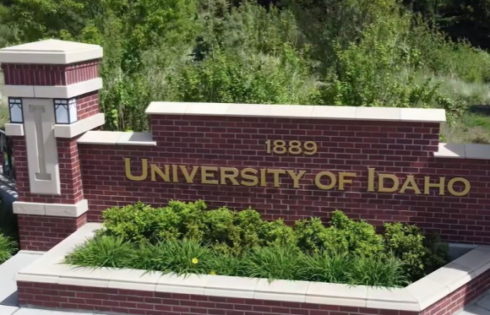Arizona citizens voted to end affirmative action last week with the passage of Proposition 107, but despite the measure passing by a 60 percent majority, debate still rages on the implications of the new law, especially in higher education.
During his annual State of the University Address Wednesday, President Robert N. Shelton reiterated his disapproval of the new law.
“At the risk of offending some who may have voted for it — and I sincerely mean no personal disrespect — I want to take just a moment to comment on one of the measures from this election, Proposition 107, because it is symbolic of a bigger challenge that we face at the University in this difficult political age,” Shelton said to an audience of several hundred administrators, university staff and alumni.
Dr. Raji Rhys, a Special Advisor to the President on Diversity and Inclusion, said the University of Arizona’s status as a premier university could be affected by the passage of Proposition 107.
“To remain a world-class public research institution we need the talent and inspiration that comes from a diverse faculty, staff, and student body,” Dr. Rhys said in an email message Friday. “The diversity of our academic community is key to quality — enriching our research, teaching, and community engagement.”
According to the official language of the new law, “This state shall not grant preferential treatment to or discriminate against any individual or group on the bases of race, sex, color, ethnicity, or national origin in the operation of public employment, public education or public contracting.”
“I understand that an employment, contracting, or educational program might be designed to help disadvantaged individuals or new companies or first-generation college students,” said Roger Clegg, President of the Center for Equal Opportunity, which endorsed the legislation. “But those folks come in all colors and both sexes, so these programs should be open without regard to race, ethnicity, or sex. Proposition 107 would not end these programs, but it would require that they be open without regard to skin color, what country your ancestors came from, or your gender.”
Supporters point to data like the success of California’s similar law.
The percentage of students in the University of California system who are ethnic minorities has increased by a much greater margin since the state passed their own measure banning affirmative action and race-based preference in 1996. According to data analysis by Dr. Michael Shermer of Skeptic Magazine, the percentage of Latino students has risen by nearly 8 percent since the passage of the California law.
In a July interview with Arizona Public Media, Shelton stated explicitly that his administration “will continue to increase our diversity,” a goal that some claim will be undermined by the passage of Proposition 107.
Statistical analysis of data provided by the UA’s Office of Institutional Research and Planning Support reveals that even with President Shelton’s stated commitment to diversity, the relative portion of the undergraduate population who belong to an ethnic minority group has increased by only 2.9 percent since 2000.
“The most influence that we’ll see or the profound impact is probably in the area of graduate and professional education,” said Jeff Millen, associate dean in the College of Education, in an interview with UA News before the election. “At the undergraduate level essentially we admit anyone who is qualified for admission to the U of A, but at the graduate level we have a more competitive, highly selective admissions process. And I do know that in many programs they take race or gender as one of many factors in making decisions.”
Rhys, of the Diversity and Inclusion office, echoed Millem’s concerns, but did not grant what the influence of ethnicity or gender in UA admissions may have been prior to the passage of this measure.
“The UA will abide by the law and within this context, we will maintain our active pursuit of diversity,” Rhys said. “The UA does not consider race or gender in admissions.”
Shelton also denied that the factors outlawed by Proposition 107 have had any affect on admissions considerations.
“Indeed, we have never used race or gender as a criterion for admission to the U of A,” Shelton said in his address.
According to the UA’s most recent Common Data Set, however, racial/ethnic status is among nonacademic factors admissions officers consider in admissions decisions.
“This proposition was just one example of a great challenge that was on display in almost every race in this year’s election,” Shelton said in his address, “where we saw campaign after campaign designed to divide people, rather than unite them; to play on their fears, rather than inspire their hope.”
“I don’t know where he’s getting that,” said Jen Gratz, Director of Research at the American Civil Rights Institute. “I think it’s interesting given that there is concrete evidence that they use race in admissions. They’ve admitted to using race in law school admissions.”
Gratz cited a 2008 study by the Center for Equal Opportunity that revealed black and Hispanic applicants to the James E Rogers College of Law were more likely to be admitted with lower LSAT scores and undergraduate GPAs than other applicants.
“It’s policies that give preference to some based on race and discriminate against others that are dividing people,” Gratz said.
“The supporters of Prop 107 want to stop division according to race, ethnicity, and sex,” Clegg said. “It is its opponents who want to continue such division and, fortunately, they lost.”
Vishal Ganesan and Anna Swenson blog for the Desert Lamp, and are students at the University of Arizona. They are members of the Student Free Press Association.




Please join the conversation about our stories on Facebook, Twitter, Instagram, Reddit, MeWe, Rumble, Gab, Minds and Gettr.